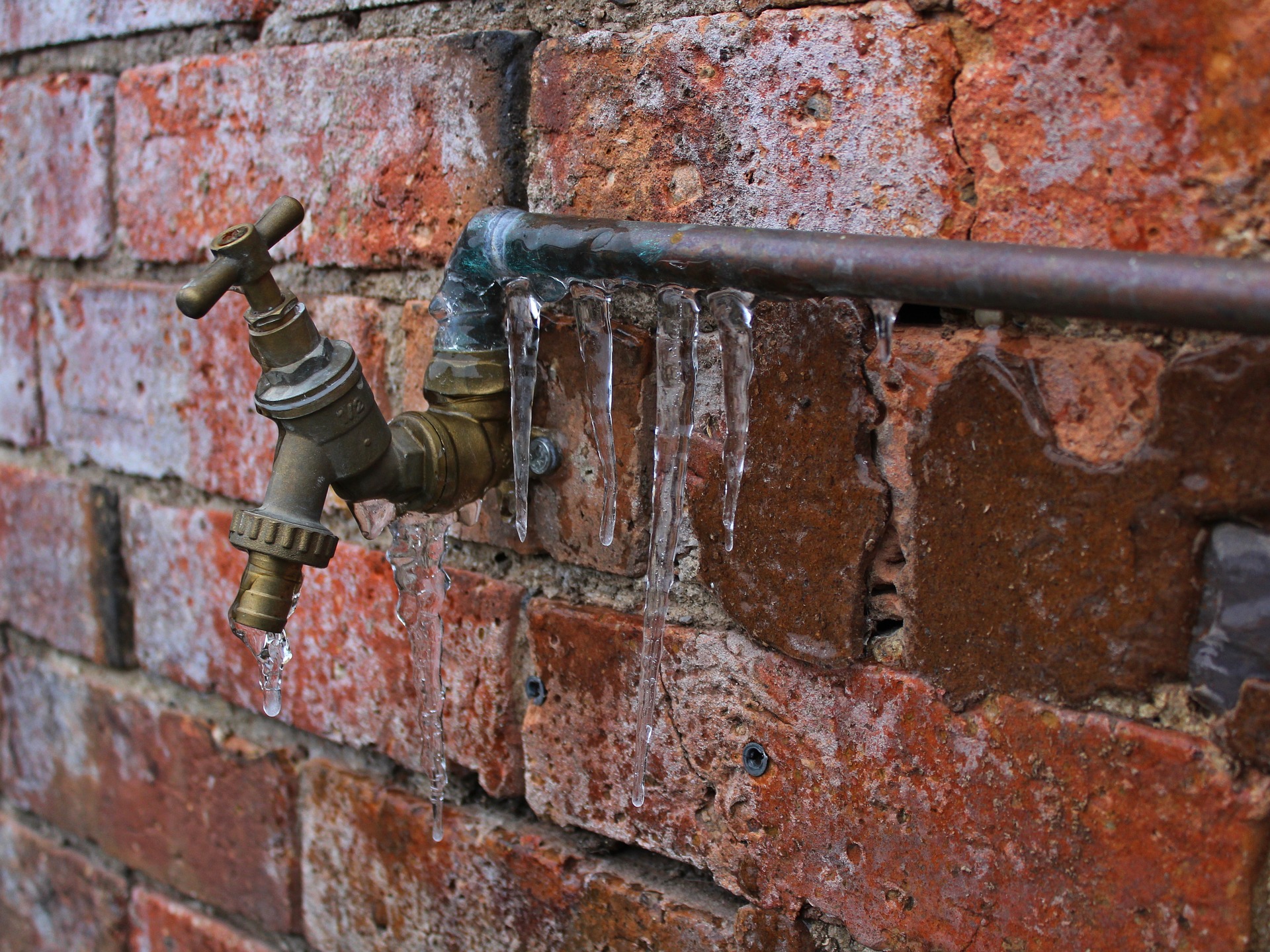Burst pipes cause misery to homeowners – not only could you be left with no hot water, there’s also the nightmare clean-up operation and costly repairs. Find out how to prepare your pipes for plunging temperatures and what to do if you’re too late.
Preparing for a sudden freeze
Before the temperature dips below 0:
Lag pipes
All visible pipes, particularly exposed pipes in crawl spaces in the attic, should be lagged with pre-formed foam (the type that wraps around the pipes) available from plumbing merchants and DIY stores. Remember, the thicker the lagging, the better (a minimum of 50mm in diameter but preferably 75mm). When insulating bends and tricky-to-reach pipes, use gaffa tape to fix it securely.
Insulate your water tank
The best option is a preformed jacket that hugs the tank. They’re filled with glass fibre matting and attach securely to the tank – this is important as you don’t want it to dislodge. With the exception of a header tank in the loft, which should be completely enclosed, there should be no insulation beneath your tank as this will prevent warm air rising from below, increasing the likelihood of it freezing.
Repair dripping taps
Replace the washers on dripping taps. If they freeze, they’ll block your pipe and cause damage.
How to deal with a frozen pipe
You’ll know if you have a frozen pipe because one or more of your taps won’t work. Before you start on your frozen pipe action plan it’s worth first checking with the neighbours that they have water – if they don’t, it’s likely there’s a problem with local supply.
If you have frozen pipes you need to:
Turn off the water supply
Turn off the main stoptap, this is usually under the kitchen sink. Now turn off the stopcock in your cold water tank, usually found in your loft. Doing this will minimise the amount of water that escapes (and the damage to your home) if one of the pipes has burst.
Protect your possessions
Move or protect anything in your home that’s near to pipework, and cover your junction box.
Locate the freeze
If you’re not confident at DIY, now’s the time to call in a reputable plumber. If, however, you have a good basic knowledge of plumbing you can attempt to locate the freeze and thaw it. Do this by checking the flow of water from all appliances, like taps and toilets, throughout your home. Once you’ve narrowed down the area you suspect to be frozen, look for further clues, for example an unlagged section of pipework or draughts next to a pipe, feeling with your hands for areas that are noticeably colder to the touch.
Let the thaw commence
Inspect the pipe and nearby fittings. If they are all intact you can gently thaw the affected area using a hair dryer or a hot water bottle. Never use a blowtorch or heat gun. If the pipe has split, read below.
How to deal with a burst pipe
A burst pipe can cause serious damage to the structure and wiring of your home, so take action immediately:
Turn off the water supply
As above.
Drain the system
Turn on all your cold taps and flush your toilets.
Turn off heating
Switch off central heating, immersions and other heating installations. If your heating uses solid fuel let it die out. Once the water heating has shut down, turn on the hot taps to further drain the system.
Turn off the electrics
If water from a burst pipe is leaking near any electrics, switch off the mains but if the mains switch is wet, don’t touch it! Call in a qualified electrician.
Collect the water
If the leak is small you can mop it up using towels, but you’ll need buckets if it’s coming through the ceiling. If the ceiling starts to bulge stand out of the way and pierce the plaster with a long screwdriver or a broom handle.
Fix the leak
Now’s the time to call in the professionals and, if there’s significant damage, your insurance company. If you’re a handy at DIY you can fix the damage with an infill connector, repair putty, a pipe clamp, fibreglass tape or a temporary patch.
Preparing before you go away
Don’t return from your winter sun or ski trip to a deluge of water from your front door. Before you head off:
- Check the forecast. If severe weather is due leave your heating on
- Leave your loft trap door, kitchen cupboards and bathroom cabinets open to allow warm air to circulate
- Ask a friend, relative or neighbour to visit while you are away. This will help minimise the damage if you do have a burst pipe
- Turn the stoptap off and drain the whole system if you’re going away for a long time
- Check your insurance is up-to-date and that you’re covered for the full value of your contents


